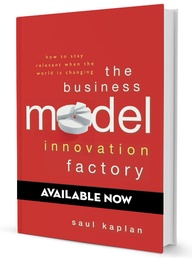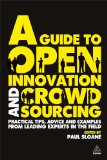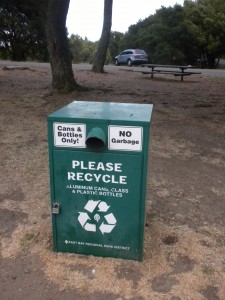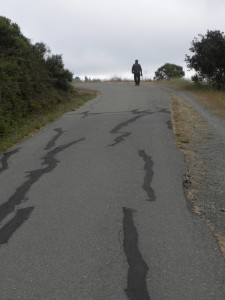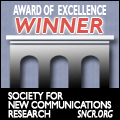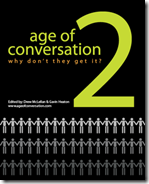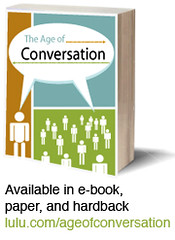Part of our company’s 30th Anniversary Year Series — only featured posts are visible on the blog. (You can start by reading Part 1 here.)
As you may have noticed, the front page of this blog has been devoted to our company’s “30th Anniversary Highlights” blog posts for the past year; and actually, we’ve been putting some posts in that category for about two years.
We’ve certainly been proud of our work for our much-appreciated clients, and we’ve been celebrating our longevity and adaptability, especially during a recession. We also tremendously appreciate the important, valuable work done by, and with, our collaborators, contractors, employees, and interns over the years.
Additionally, we’ve been going through a major transition due to changes in the social business landscape, and the kinds of services our clients have been asking for recently; and, as the founder of Creative Sage™ / Cathryn Hrudicka & Associates, some of this transition reflects my own personal interests, inspired by client requests and community conversations.
Therefore, I have decided that it is time to change the title and focus of this blog to more accurately reflect the change in focus of our company. Although “PR, Social Media and Marketing Mentor” is still relevant to some of our work — and personally, I still love training and mentoring people in this field — what we do and the value we offer clients has expanded so significantly in the past few years, I no longer want to write regular blog posts only about that topic area. There are many other “how to use social media basics” blogs, books and e-books around, and I don’t think it is the best use of our strengths or time to keep adding yet another round of “how to” posts about social media strategies and tools, integrated with public relations and marketing.
I recognize that many organizations still need that information, and we’re glad to provide it in the context of projects, where we train, mentor and coach our clients so that they may become independent of our tutelage and can move on to implement that work with their own employees, in most or all departments.
We will of course continue to serve the clients we now have, who have retained our services for integrated social media, public relations and/or marketing programs; but I’m putting out the word now — if you’ve been thinking of working with us primarily in that area, we may not offer as many services for external outreach after December 31, 2013. I’ll explain more below, and in subsequent posts, about the future direction for our company. If you’re interested in retaining our integrated social media strategy, PR and/or marketing services — NOW is the time to contact us, or at least before December 31, 2013 — and preferably by January, 2013, so we have time to get your project(s) on our calendar.
We will only make exceptions after December 31, 2013 on a very limited basis, for carefully chosen ground-breaking projects that include other elements of innovation, open innovation, collaboration, or cultural transition work within or between organizations. If you have any questions or concerns about whether or not our company would be a good fit with your project or organization, please contact us, and I’ll be glad to talk with you about your situation personally.
Riding the Open Range, and the Ranch House is Open for Renovation
Recently, I’ve been reading Saul Kaplan’s recently published book, Business Model Innovation Factory, which I’ll be writing more about soon on our innovation blog, “What’s Innovation Got to Do with It?”.
I’ve also been an active participant in a number of discussions and online chats about business model innovation lately, and that’s a crucial step for many organizations to take today. It’s no longer enough to simply innovate your products or services in order to keep up with the pace of change in the world, and carve out a niche beyond what your competitors are offering. You need to keep testing and innovating your business model, and the entire ecosystem in which your products and services live; and what clients and customers really are seeking is the entire experience of working with your organization — they don’t just buy products and services.
Also, in a difficult, unpredictable economic era, it is essential to develop multiple streams of ongoing income, and not rely too much on serving one or a few key clients, or offer only one primary area of services, unless you’ve really cornered a niche market that can afford to keep sustaining your business. Indeed, anything is open to innovation and change, including operations, management styles, your business model, organizational culture, and more — not only product or services innovation.
In Saul Kaplan’s new book on business model innovation, he wrote that, due to our increasingly social and transparent environment, organizations should be “open for renovation,” rather than “closed for renovation” — and they should ask for, and listen to, suggestions from their customers, collaborators and other constituents.
So, in that spirit, borrowing from Saul Kaplan’s valuable book, I have at least temporarily added “Open for Renovation” below this blog’s title, which means we will continue to observe, listen to, and sometimes ask or survey our business community for their opinions about how we can add value and a compelling experience for them, which will directly inform our work on their behalf.
This includes YOU, the readers of our blogs. We welcome your questions, opinions, suggestions and responses, in comments below posts—or, you are always welcome to contact us by email or call us at 1-510-845-5510. Please leave a message if you would prefer talking with me personally, and I’ll be glad to get back to you as quickly as possible.
Open to New Content and Topic Areas
Another reason for the blog name change — as a writer with a diverse background, I would like to write about a more open variety of topics, and I may for the first time invite guest writers to submit ideas, as long as they are relevant in some way to the needs and interests of our clients and other community members. Therefore, you may see some changes in this blog and other web site pages over the next year or so.
Why call this post “Shoot Out at the Social Media Corral”? What does that mean, in terms of changing the title of this blog, or the content for future posts?
Well, since the mid-2000s, we’ve seen “Social Media” expand from being mainly a part of integrated marketing and PR outreach programs to being incorporated in almost every business unit. In fact, since 2007, and especially in the past 2-3 years, our own work at Creative Sage™ has been increasingly focused on using social engagement tools for innovation, open innovation, collaboration, crowd sourcing, co-creation, crowd funding, employee relations and training, health care education, customer service, and toward other purposes that are now often broadly characterized as “Social Business.”
When I first started the “PR, Social Media and Marketing Mentor Blog,” the uses for social media were primarily classified under the banner of marketing and community outreach. Now, perhaps we no longer need separate blogs and separate business departments for all the applications of “social” our clients may need — and, in fact, we need to turn this whole situation on its head and look at it all in a different way.
After brainstorming possible new names for the blog, I’m not satisfied with using “Social Business” as an overall catch-phrase. Honestly, I’m getting a bit bored by all the massive hype and trendy titling of everything social as “Social Business,” even if it’s accurate.
Are we stuck with the terms, “Social Business” and “Social Media,” when really, the “social” elements should by now be fully integrated into everything we do, and every contact point we have with clients, potential clients, collaborators, the media and our overall community?
By “shoot-out,” I mean that we’re constantly seeing agencies and consultants trying to compete with each other by using different configurations of “social” — and I think it is timely to ask:
How many social media / social business experts or agencies do we really need? The simple answer may be that a percentage of organizations will always benefit from retaining the services of outstanding social business consultants and agencies that understand the needs of unique client industries and markets; but it seems that we are now overwhelmed with social agencies and self-proclaimed social consultants. Ultimately, client organizations must learn how to strategize, integrate, manage, implement, and measure the results of their own social programs.
Will the “social agency” or “social strategy consultant” be extinct within a few years, as social roles and functions become fully integrated within organizations?
At this point, isn’t it more about advising, training, coaching and mentoring our clients on a shorter-term basis so that their employees or work teams in all departments can run their own social business programs in-house?
I truly mean no disrespect to any other consultants or agencies, but can’t we be more original than to call everything “social”?
Now that we’ve integrated the social aspect into most key business functions, it seems that the differentiating characteristic of a business should no longer be that they offer social media or social business services or products. The search for a differentiating factor should lead us to these questions:
- What is it that you enable your customers to be and do, and do so much better that they distinguish themselves as leaders in their industries?
- What unique values or experiences do you offer them, and as an extension, what value do you offer their customers or constituents?
- What jobs do your clients or customers need to get done, and for whom? How can you make that better and easier for them?
- How can you make your clients’ or customers’ lives, work and workplace culture more meaningful, more enjoyable, more productive, more creative, AND help them make their own results more successful on different levels, including (but not limited to) profit?
I think asking these and other questions on an ongoing basis may lead us to new business models, and new answers for ourselves and our clients. It will also lead to new names for “Social Business.”
Managing Ongoing Change and Developing Resilience in a Culture of Transition
Regarding managing ongoing change and developing resilience in a culture of constant transition, these are, and will continue to be, the ongoing necessities of life, business and work in the future, and we must all learn how to meet the challenge of those necessities more effectively. We must also educate our children in a way that prepares them to develop their abilities to cope with change, manage transition, and develop resilience, too. Certainly, a focus on developing creativity, problem solving, analytical and critical thinking skills should be key in every child’s education from now on, as well as learning with a multidisciplinary and interdisciplinary approach. Often, our children can teach us how to cope, if only we would all listen to them and take them more seriously.
At our company, we are now focusing on how we can help people and organizations even more in those areas — coping with not only personal, but cultural changes in the workplace, managing life and work transitions, and developing resilience (personally and professionally) — because we have noticed that it’s really at the root of everything we’ve done, and that we’ve received a lot of feedback that we do it really well.
So, our work is no longer *just* social media-oriented, and our focus is no longer mainly on marketing, PR and social media outreach. Our work has become much more of a hybrid of empowering individual people, work teams and organizations across industries or silos to adapt, change, make transitions and build resilience by drawing upon their own creativity and other resources that may be available both inside and outside of the organization.
We are now coaching, mentoring and training not only C-Suite executives, but individual professionals, business owners, nonprofit managers, and innovation teams, as well as people planning a meaningful encore life and career instead of traditional “retirement.” As part of the process, we often help them learn to use social tools, whether proprietary, or not. Our work is more strategy, collaboration, and innovation focused than it was a few years ago, and all indications are that it will continue to move further in those directions.
Clearly, although we continue to have a highly successful track record in PR, social media and marketing, that department is no longer our primary business focus — but the strength of our experience in that field does inform our work, and it is an area we can draw upon for the benefit of our clients.
In the past few years, I have had several offers from other companies to buy or merge with our company. So far, although I appreciated all of the offers, I have turned them all down because, for one reason or another, I didn’t feel any of them were quite the right match for Creative Sage™; and I feel that we have an ongoing mission and vision that is sustainable in the future, and I’d still like to be part of it as we move into our next era.
Ironically, I have also declined or referred more work in the past two years than at any other time in recent memory, despite the recession economy. Although that may seem counter-intuitive, it was a risk I chose to take, because I’ve observed many organizational transitions in the business and nonprofit sectors, and I decided that we needed to grow in a new direction. Often, focusing on a new direction requires streamlining or cutting some of the very services or products that have made your firm successful, in the interest of progress. (I’ll write more about that in another post.) My recent business model innovation discussions convinced me that we needed to rethink our business model as well.
For a while, I was considering permutations of business models that other consultants, agencies and coaches were using that have been successful; but now, I think even those need to keep evolving. I’m seeing a lot of burn-out in the coaching industry, for instance, where business models that were working well two years ago are not working so well now, partly influenced by the economy and a less risk-oriented, more frugal mindset in potential clients.
I’ve been carefully observing and listening to the conversations of our clients, potential clients, and many other people, and I’ve been noticing some patterns, in terms of what’s missing, what they’re looking for, what they might want that they don’t even know they want yet, as well as what they’re saying they really need, between the lines. Often, what people don’t say outright is as important (or more) than what they do say.
Empathy is becoming important more important than ever, as we need to put ourselves in the place of each client and potential customer or constituent when we design services, products, systems or processes for them. Each of those components works better when part of an entire ecosystem of products and services, and when there is a unique customer experience, as we’ve seen at Apple, IBM, 3M, and other successfully innovating companies.
After contributing to two of the books edited by Drew McLellan and Gavin Heaton, The Age of Conversation 2: Why Don’t They Get It? (2008) and The Age of Conversation 3: It’s Time to Get Busy (2010), and writing chapters about how innovation, hiring and Human Resources dovetail with a social culture, I was fortunate to be chosen as one of the contributing authors to the Amazon best-selling business book, A Guide to Open Innovation and Crowd Sourcing: Advice from Leading Experts, edited by Paul Sloane, with a foreword by Henry Chesbrough (published by Kogan Page in 2011). As Founder, CEO and Chief Imagination Officer of Creative Sage™, I co-wrote the chapter, “Building the Culture for Open Innovation and Crowd Sourcing,” with Gwen Ishmael and Boris Pluskowski. For more information about all of the co-authors and the contents of this book, visit: http://bit.ly/OI_CS_Google. You can order it on Amazon, at: http://amzn.to/OI_CS.
The fulfilling experience of collaborating with Paul Sloane and my co-authors, and writing my own section, reinforced my conviction that Creative Sage™ had been gradually moving into a new direction of innovation in our services, potential new products, business model, and in our experiential offerings for our clients, as well as for purpose of creating value for our wider community. It also became clear that the content we had been producing needed to shift along with the other changes within our company.
Social Innovation, Social Entrepreneurship, and Corporate Social Responsibility
A form of “Social” that has always interested me is “Social Innovation,” and that’s an additional name I’d like to replace with something more original. It refers to using social tools for innovation programs, and it also means innovating for social good, i.e. social causes, government, education, health care, the environment, and in other areas that are beneficial to people, animals and nature as a whole.
If we maintain this as a unique blog on our CreativeSage.com web site, instead of the title, “PR, Social Media and Marketing Mentor,” I am thinking of designating it as a “Social Innovation” or “Social Entrepreneurship” blog, perhaps without those terms in the title. Or, at the very least, Social Innovation, Social Entrepreneurship, and Corporate Social Responsibility related posts will be featured in a special category.
What is relevant to our company’s new direction is that we have always supported a number of nonprofit, social good and social entrepreneurship causes; and increasingly, we are doing work that involves innovation, open innovation, collaboration, co-creation, crowd sourcing, crowd funding and corporate social responsibility consulting, to solve big problems in our society, and to further the success of good causes that benefit humans, animals and the environment. This includes some of the work we have done with health care-related organizations as well.
Over the years, either through our company’s contributions, or in past leadership and board positions that I’ve held in for-profit and nonprofit organizations, I’ve been fortunate to be able to help raise millions of dollars for a number of good causes, through fundraising campaigns, social fundraising projects, donor relations direct mail, subscription and telefundraising campaigns, writing successful grant proposals, and producing events and benefit concerts. Although I haven’t emphasized the fundraising and event production capabilities of our organization on our web site, that background is always helpful to our clients when they are developing their own fundraising programs.
Now, of course, we are becoming increasingly involved in crowdsourcing and crowdfunding projects as well, and we’re always keeping our ear to the ground for new developments in enterprise venture and fundraising innovation, in both the for-profit and nonprofit sectors. In fact, we’re working toward helping to create some of these new innovations, probably in partnership or collaboration with other organizations.
Forward to the Future…
In the near future, I’ll be writing more about other business topics that reflect the transitions mentioned above, taking into consideration how using social business strategies and tools has changed our workplaces and organizations in the past few years; and it’s likely that I’ll talk more about the books I’m writing, and other content I may be producing, or co-creating. While I will no longer exclusively focus on external marketing, public relations, and social media strategies, uses and techniques, I will be gradually adding new topics or colors to this blog’s palette. When the time is right, as the new range comes more clearly into view, we’ll rename this blog, ideally with your input.
Using the guidelines mentioned in this blog post, we will, for the first time, accept brief pitches (please email one to three paragraphs, with a few links to samples of your work) from reputable guest bloggers, as long as the proposed topics are relevant to the areas I have outlined above, and that they do not represent competing interests with our company or the interests of any of our clients. No pitches will be accepted that are completely self-promotional in nature, although you may be permitted to include a very short bio with a link to your relevant web site or blog at the end of your guest post, at our discretion.
To all of our readers — I am always vitally interested in YOUR questions, challenges, comments and feedback. Please feel free to add a comment beneath this post, about what YOU would like to see me write about—what really matters the most to you and your organization right now?
What do you think will matter to you in the future—in a year, five years, or ten years and beyond?
How can we help you, or your organization, solve your most pressing problems and grow to meet the challenges YOUR clients, customers, or constituents face?
If you would prefer, you may certainly contact me privately by email or phone: 1-510-845-5510 in the San Francisco Bay Area. We look forward to listening to you and learning more about what matters most to you and your organization, now and in the future.
A business, at its best, is always a partnership, a vitally creative collaboration between the organization, fulfilled, successful clients or constituents, and the intrinsic community. I look forward to your comments, and our next conversation!
(Photo credits: Top photo of a video game scene, from FreakingNews.com; all other photos copyright, and taken by, Cathryn Hrudicka.)
Return to the Cathryn Hrudicka & Associates Home Page


